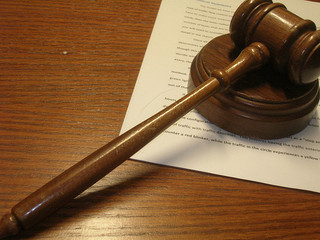Many of us have wondered about how we would act in an emergency. Would we step in as a Good Samaritan and attempt to rescue a stranger? One of many valid concerns for a would-be-rescuer is fear of suffering a severe injury themselves. It is an issue many are pondering after the events that followed Sunday’s Raiders game. As an Oakland injury law firm, we wanted to take a look at legal issues related to Good Samaritan injuries – Does the law provide recourse for an injured rescuer? Does this change if the person the rescuer sought to help had placed him/herself in peril?
Good Samaritan Injured Catching Woman Who Jumped from Stadium Deck
On Sunday, the Oakland Raiders lost. We don’t know if that loss was a factor in a woman’s decision to enter a closed section of the O.co Coliseum and leap off the third deck. The San Francisco Chronicle reports that two people on the concourse below unsuccessfully tried to persuade the woman not to jump. Officials with the Alameda County Sheriff’s Office report that one Good Samaritan attempted to catch the woman, breaking her fall and likely saving her life. Ultimately, the woman was knocked unconscious and taken to the hospital in critical condition. The Good Samaritan incurred serious injuries.
While it appears the rescuer in the stadium story knew the woman had jumped, let’s imagine a scenario in which the would-be rescuer didn’t know the jump was intentional. Does the rescuer in such a scenario have a right to damages from the jumper for injuries incurred in the attempted rescue?
Development & Application of the Rescue Doctrine
 The analysis begins with a basic principle: people are responsible for the results of their willful acts. While this includes responsibility for injuries to another person, that responsibility is limited to the extent the other person has “willfully or by want of ordinary care, brought the injury upon himself or herself” (see Civil Code Sec. 1714(a)). However, since the law wants to encourage rescues, there is specific law applying to rescues. The rescue doctrine, summarized in Civil Jury Instruction 453, relieves rescuers from responsibility for their own injuries (even though they exposed themselves to danger) and gives rescuers a claim against the person who created the emergency that necessitated the rescue.
The analysis begins with a basic principle: people are responsible for the results of their willful acts. While this includes responsibility for injuries to another person, that responsibility is limited to the extent the other person has “willfully or by want of ordinary care, brought the injury upon himself or herself” (see Civil Code Sec. 1714(a)). However, since the law wants to encourage rescues, there is specific law applying to rescues. The rescue doctrine, summarized in Civil Jury Instruction 453, relieves rescuers from responsibility for their own injuries (even though they exposed themselves to danger) and gives rescuers a claim against the person who created the emergency that necessitated the rescue.
This concept is the basis of a decision by the Court of Appeals in the 1999 case of Sears v. Morrison (76 Cal.App.4th 577). As detailed by the court, the rescue doctrine provides: “an actor is usually liable for injuries sustained by a rescuer attempting to help another person placed in danger by the actor’s negligent conduct.” In that case, Sears was injured trying to help rescue Morrison from an accident caused by Morrison’s own actions. Put another way, Sears was hurt rescuing Morrison from his own negligence. The appellate court made clear that the rescue doctrine applies when a defendant endangers him/herself: “The question here is whether an actor is liable for injuries sustained by a person who is trying to rescue the actor from his own negligence. The answer is yes.”
Our initial research did not reveal a case in California examining the rescue doctrine where the defendant had attempted suicide (presumably the case when someone jumps from a great height). However, other jurisdictions have found the rescue doctrine does allow a claim against someone who attempted suicide (for example Strickland v. Kotecki, 913 N.E.2d 80 (2009) from the Appellate Court of Illinois).
Encouraging Rescues, Seeking Justice
In the end, the rescue doctrine is about public policy and encouraging people to act in an emergency. It prevents a drunk driver from saying that the person who was injured pushing a child out of the driver’s path is to blame for his/her own injuries. Over time, the policy has been extended. While we cannot comment specifically on Sunday’s events after the Raiders game, we can pose a similar hypothetical and suggest the rescue doctrine would likely apply to hold a person liable if s/he purposefully jumps from a high wall and a would-be rescuer is seriously injured.
The law is complex, but its aim is often simple — justice. If you have been injured and someone else is to blame, call to schedule a free consultation with our Oakland personal injury lawyer. It isn’t about looking for a windfall, it’s about justice.
See Related Blog Posts:
D.A.’s Decision on Firefighters in Asiana Crash Puts Focus on Good Samaritan Law
San Francisco Bicycle Accident Attorney on Safety and The Policy of Contributory Negligence
(Photo by Brian Turner)
 San Francisco Injury Lawyer Blog
San Francisco Injury Lawyer Blog

